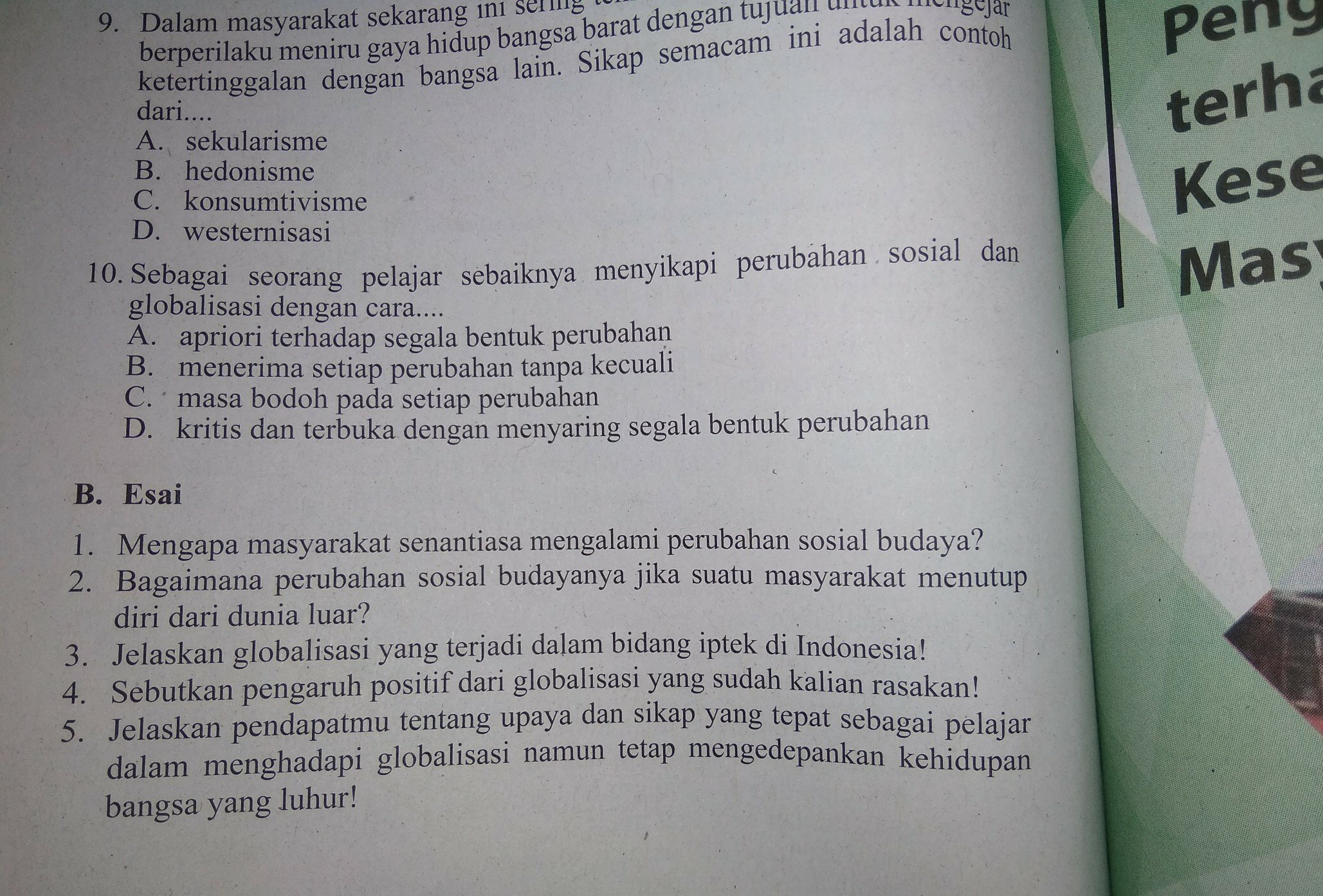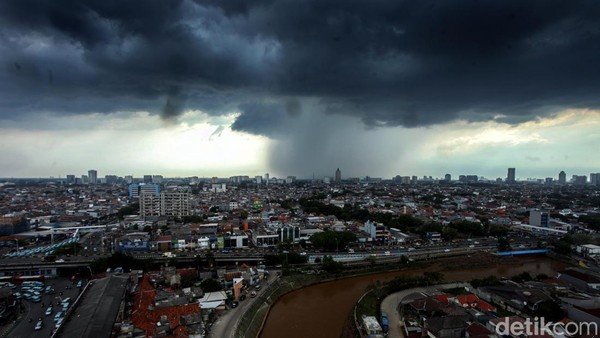
When a society shuts itself off from the outside world, it inevitably faces profound cultural and social changes. Over time, isolation breeds stagnation, as traditions and beliefs harden without external influences. New ideas, artistic expressions, and even languages may fade, creating a unique yet potentially vulnerable cultural identity.
Bagaimana perubahan sosial budaya jika suatu masyarakat menutup diri dari dunia luar? The answer lies in the balance between preserving heritage and embracing evolution. Without the ebb and flow of new interactions, societies risk losing their vibrancy and adaptability, ultimately altering their very essence.
Bagaimana Perubahan Sosial Budaya Jika Suatu Masyarakat Menutup Diri dari Dunia Luar
When a society decides to isolate itself from the outside world, the consequences can be significant, leading to profound shifts in social and cultural dynamics. The implications of such a decision touch every aspect of life, from community interactions to economic practices, and even the preservation of traditions. In this article, we will delve into how social and cultural changes unfold in a community that cuts off from external influences.
The Concept of Cultural Isolation
Cultural isolation occurs when a society actively chooses to limit interactions with outside cultures. This can happen due to several reasons, including political motivations, religious beliefs, or a desire to preserve cultural identity.
– **Political Isolation**: Governments may choose to restrict contact with the outside world to maintain control over their population. This control can manifest in censorship, limited access to information, or strict immigration policies.
– **Religious Isolation**: Communities may isolate themselves due to religious beliefs that emphasize separation from secular influences, promoting a way of life and values that differ significantly from the mainstream.
– **Cultural Preservation**: Some societies may seek isolation to protect their traditions, languages, and customs from being diluted by outside influences.
Impact on Social Structure
When a society isolates itself, the social structure undergoes changes that can redefine community life.
Loss of Diversity
Cultural diversity contributes to the richness of social interactions. When a society closes its doors, it limits exposure to different ideas, practices, and worldviews.
– **Homogeneity**: The community may become more homogeneous. This uniformity can lead to a lack of innovation and creativity within social dynamics.
– **Resistance to Change**: With fewer influences from the outside, the society might resist change altogether. Traditional values may stay strong, but this can also stifle progress and adaptation to new challenges.
Changes in Social Roles
As communities drift inward, changes in social roles can occur.
– **Reinforced Gender Roles**: In isolated societies, traditional gender roles may become more rigid. Women may find themselves confined to domestic responsibilities, while men dominate public life.
– **Elder Influence**: Older generations may hold more power and influence, as they become the primary bearers of tradition in the absence of outside perspectives.
Effects on Communication and Interaction
Social interaction in an isolated community can change drastically.
Limited Communication Styles
Without outside influences, the language and communication styles may evolve.
– **Invented Language**: Some communities might develop their own dialects or slang to enhance solidarity amongst members, creating a stronger group identity.
– **Reduced Non-Verbal Communication**: As external influences fade, behaviors and non-verbal cues may become less diverse, limiting the ways people express feelings or emotions.
Social Events and Gatherings
The way communities celebrate and interact can also shift.
– **Traditional Celebrations**: Isolated societies may hold on to traditional festivals more fiercely, as these traditions become key to their identity.
– **Increased Local Participation**: With fewer outside events to attend, local gatherings may become the focal point for social interaction, strengthening community bonds.
Cultural Preservation and Evolution
Cultural preservation is a double-edged sword. While it allows communities to maintain their identity, it can also lead to stagnation.
Strengthened Traditions
In an isolated society, traditions may become more pronounced.
– **Rituals and Customs**: Practices that are often forgotten in more interconnected societies might regain significance, leading to a vibrant cultural life.
– **Art and Expression**: Art forms, music, and dance may reflect a purer version of local culture, untainted by foreign influences.
Resistance to New Ideas
While some traditions flourish, new ideas may face rejection.
– **Fear of Change**: The society might exhibit resistance to innovation or change, viewing outside influences as threats to their way of life.
– **Stagnation in Development**: Economic and technological advancements that come from cross-cultural exchanges may stagnate, resulting in less growth and adaptation.
Economic Implications
Isolation has a significant impact on the economy of a society.
Limited Trade Opportunities
By cutting off external contacts, communities may limit their economic prospects.
– **Local Markets**: The focus on local production may increase, but this can also lead to a lack of goods and services.
– **Bartering Systems**: Some societies might revert to bartering, which can be cumbersome and less efficient than a cash-based economy.
Self-Sufficiency Challenges
Communities may strive for self-sufficiency, but this poses challenges.
– **Resource Limitations**: A lack of access to diverse resources can lead to shortages of essential goods, impacting daily life.
– **Innovation Stagnation**: Without exposure to new technologies or practices, societies may struggle to keep pace with the modern world.
Education and Knowledge Exchange
Education systems may also be heavily affected in an isolated community.
Focus on Traditional Knowledge
Education may center around traditional knowledge and skills.
– **Cultural Education**: Schools might emphasize local history, traditions, and languages, fostering a strong sense of identity among students.
– **Limited Curriculum**: Conversely, the scope of education may narrow, lacking broader scientific or global perspectives.
Restricted Knowledge Sharing
Knowledge exchange with outside communities would decrease.
– **Limited Access to Information**: The community might lack access to global news, scientific advancements, and educational resources, limiting critical thinking and innovation.
– **Censorship of Ideas**: In some cases, any outside influence may be viewed with suspicion, leading to censorship of new ideas or philosophies.
Psychological and Emotional Consequences
The effects of cultural isolation reach into the psychological and emotional states of individuals within the society.
Feelings of Inferiority
Isolation might lead to feelings of inferiority or insecurity regarding cultural value.
– **Comparison with Outsiders**: People may develop a desire to break free from isolation but feel trapped, leading to frustration and discontent.
– **Mental Health Issues**: Isolation can contribute to mental health struggles, including anxiety and depression, especially among those who yearn for broader connections.
A Stronger Community Bond
On the flip side, isolation can foster a stronger sense of belonging.
– **Shared Identity**: People may develop a stronger emotional bond with their community as they share values, customs, and experiences.
– **Mutual Support**: In tight-knit communities, individuals may find a strong support system, creating a safety net during challenging times.
Cultural isolation leads to a myriad of changes within a society, affecting social structures, communication patterns, and economic viability. While traditions may flourish and community bonds may strengthen, the risks of stagnation, limited innovation, and psychological challenges can also manifest. Understanding these dynamics helps to appreciate the complexities of cultural evolution in isolated societies.
ruangbelajar – Sosiologi XII SMA – Perubahan Sosial
Frequently Asked Questions
What are the potential impacts on cultural identity when a society isolates itself from external influences?
When a society isolates itself from external influences, it may experience a strengthening of its cultural identity. This can lead to a more pronounced expression of traditional customs, values, and practices. However, the lack of interaction with other cultures can also result in stagnation, limiting the society’s ability to evolve or adapt. Over time, this isolation may foster a sense of pride in unique cultural traits but can also create a narrow worldview, making it difficult for individuals to engage with or understand other cultures.
How might isolation affect social structures within a community?
Isolation can significantly impact social structures within a community. It may lead to the reinforcement of existing hierarchies and social norms, as external influences that often challenge these structures are absent. This can create a more homogenous society where deviation from the norm is less tolerated. Conversely, isolation can also lead to internal conflicts if subgroups within the community push for change or modernization while the dominant group prefers to maintain traditional structures.
In what ways can limited exposure to outside ideas hinder innovation in a society?
Limited exposure to outside ideas can hinder innovation in several ways. Without interaction with different cultures, societies miss out on new perspectives and technologies that can inspire creative solutions to local problems. This lack of exchange can result in a reliance on outdated methods and ideas, stifling progress. As a consequence, the community may struggle to adapt to changing circumstances or address challenges effectively, ultimately impacting their development.
What role does education play in a society that chooses to remain closed off?
In a society that remains closed off, education often reflects the limited context of its environment. The curriculum may focus heavily on local history, traditions, and values while neglecting global perspectives and advancements. This can restrict students’ critical thinking skills and their ability to engage with the world beyond their community. Without exposure to diverse viewpoints and knowledge, individuals may find it challenging to compete in an increasingly interconnected world.
Can isolation influence economic development within a community, and if so, how?
Isolation can significantly influence economic development by restricting trade and limiting access to resources and markets. Communities that close themselves off may miss opportunities for economic growth through commerce with outside entities. This can lead to a reliance on local resources, which may not be sustainable in the long term. Additionally, without exposure to innovative practices and technologies, a society may fall behind economically compared to more open communities.
Final Thoughts
When a society isolates itself from the outside world, it risks stagnation in cultural and social development. The lack of external influences can lead to a homogeneous culture, where traditions remain unchanged and innovation diminishes.
Furthermore, closing off from global interactions limits opportunities for economic growth and social progress. Tensions may arise from the inability to understand different perspectives, fostering an environment of intolerance.
In conclusion, ‘bagaimana perubahan sosial budaya jika suatu masyarakat menutup diri dari dunia luar’ highlights that isolation can hinder a society’s ability to adapt and thrive in a rapidly changing world. Embracing openness allows for growth and enriches the cultural tapestry.




